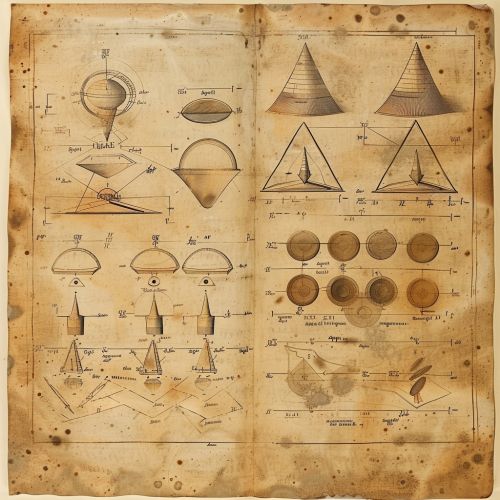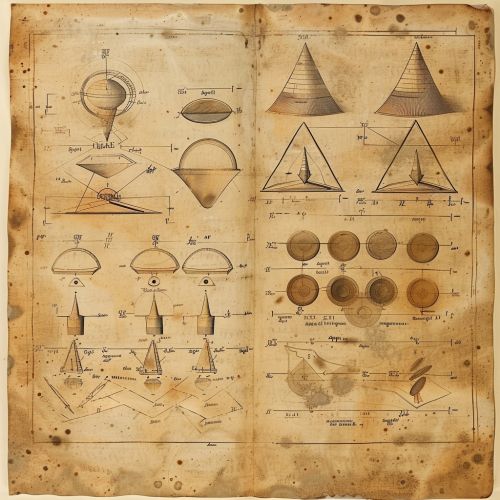Ibn Sahl (mathematician): Difference between revisions
(Created page with "== Early Life and Background == Ibn Sahl, full name Abū Saʿd al-ʿAlāʾ ibn Sahl, was a prominent Persian mathematician and physicist who lived during the 10th century. Born in Baghdad, which was a major center of learning and culture during the Islamic Golden Age, Ibn Sahl made significant contributions to the fields of optics and mathematics. His work laid the groundwork for future scholars, including the renowned Ibn al-Haytham. == Contributions to Optics == Ibn...") |
No edit summary |
||
| Line 11: | Line 11: | ||
In his treatise, Ibn Sahl demonstrated how to design lenses and curved mirrors that focus light without geometric aberrations, a concept that would later be essential in the development of optical instruments. He used the principles of refraction to derive the correct shapes of lenses and mirrors that could focus light to a single point. This work was crucial in the development of optical science and technology. | In his treatise, Ibn Sahl demonstrated how to design lenses and curved mirrors that focus light without geometric aberrations, a concept that would later be essential in the development of optical instruments. He used the principles of refraction to derive the correct shapes of lenses and mirrors that could focus light to a single point. This work was crucial in the development of optical science and technology. | ||
[[Image:Detail-97343.jpg|thumb|center|An ancient manuscript showing diagrams of lenses and mirrors.|class=only_on_mobile]] | |||
[[Image:Detail-97344.jpg|thumb|center|An ancient manuscript showing diagrams of lenses and mirrors.|class=only_on_desktop]] | |||
== Mathematical Contributions == | == Mathematical Contributions == | ||
Latest revision as of 14:22, 27 July 2024
Early Life and Background
Ibn Sahl, full name Abū Saʿd al-ʿAlāʾ ibn Sahl, was a prominent Persian mathematician and physicist who lived during the 10th century. Born in Baghdad, which was a major center of learning and culture during the Islamic Golden Age, Ibn Sahl made significant contributions to the fields of optics and mathematics. His work laid the groundwork for future scholars, including the renowned Ibn al-Haytham.
Contributions to Optics
Ibn Sahl is best known for his pioneering work in the field of optics. His most significant contribution is the discovery of the law of refraction, which is now commonly known as Snell's Law. This law describes how light bends when it passes from one medium to another, such as from air to water. Ibn Sahl's work on refraction was documented in his treatise "On Burning Mirrors and Lenses" (Kitāb al-Harāriṭ wa al-Marāyā al-Muḥriqa), written around 984 AD.
Law of Refraction
In his treatise, Ibn Sahl demonstrated how to design lenses and curved mirrors that focus light without geometric aberrations, a concept that would later be essential in the development of optical instruments. He used the principles of refraction to derive the correct shapes of lenses and mirrors that could focus light to a single point. This work was crucial in the development of optical science and technology.


Mathematical Contributions
Ibn Sahl's contributions to mathematics, although less well-documented than his work in optics, were nonetheless significant. He worked on problems related to geometry and trigonometry, and his methods influenced later Islamic mathematicians.
Geometrical Methods
Ibn Sahl employed geometrical methods to solve problems related to the design of optical instruments. His understanding of the geometric properties of light paths allowed him to derive the shapes of lenses and mirrors that could focus light effectively. This geometrical approach was innovative for its time and demonstrated a deep understanding of both mathematics and physics.
Influence and Legacy
Ibn Sahl's work had a profound impact on the development of optics and mathematics in the Islamic world and beyond. His treatise on burning mirrors and lenses was studied by later scholars, including Ibn al-Haytham, who is often considered the father of modern optics. Ibn Sahl's methods and discoveries were also transmitted to Europe, where they influenced the work of later scientists such as Johannes Kepler and René Descartes.
Transmission to Europe
The transmission of Ibn Sahl's work to Europe occurred through translations of Arabic texts into Latin during the 12th and 13th centuries. The knowledge of refraction and the design of optical instruments became an integral part of the scientific revolution in Europe, leading to the development of telescopes and microscopes.
